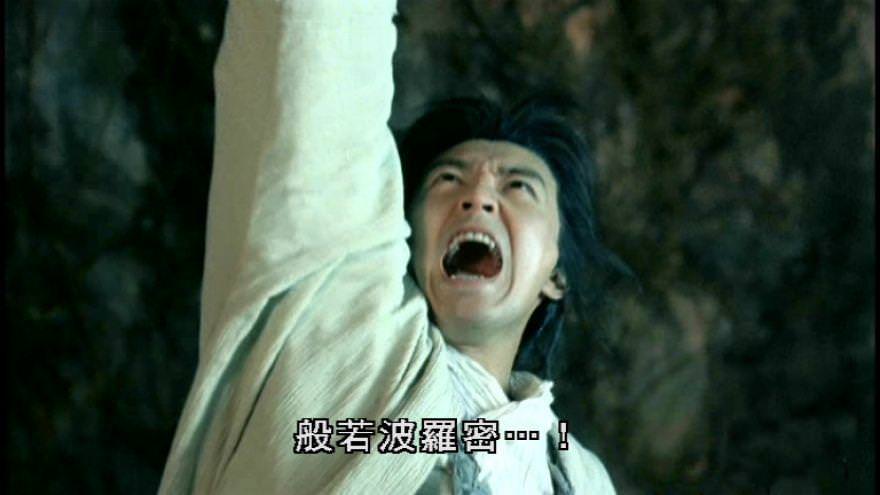愛貪不樂的嬲查房
女生很風騷且舉止輕佻,福建話可作:
嬲 = 嬈 hiâu (形容詞)。「嬲查房」讀作 hiâu tsabóo。見臺灣閩南語常用詞辭典。嬲查房
但「嬲」原是動詞,指的是二男嘎訆 = gǎjiào = کاچاو = kacau = 擾亂 = 嬲惱 = 嫐惱. Malay verb meaning disturb or harass.嘎訆一女。
當然,女也可嘎訆男,但是在晉隋唐時代的中國人還沒有造出「嫐」字。所以,女嘎訆男的動作,我們也用「嬲」,而這樣的女生可稱作「嬲查房」。現在看例句。
- 例句一:媽媽見巳加整天在扮漂亮,於是便對女兒說:
妳真的是嬲查某呀妳。
- 例句二:初,天竺中多諸外道,並事水火毒龍,而善諸變幻。釋迦之苦行也,是諸邪道,並來嬲惱,以亂其心,而不能得。
Mara’s daughters murmured: “Men’s tastes are diverse. Let us each manifest ourselves in the form of 100 maidens.” Then they each tranformed into 100 maidens and approached Gautama. But again Gautama paid no attention.
Then Taṇhā, Rāga, and Arati went on and attempted different variations: in the form of 100 women who have never given birth . . . in the form of 100 women who have given birth once . . . in the form of 100 women who have given birth twice . . . in the form of 100 women of middle age . . . in the form of 100 women of old age . . .Temptation of Buddha (1921) by Eduardo Chicharro Aguera (1873 - 1949)
例句二是《《隋書 ・ 卷三十五 ・ 志第三十 ・ 經籍四》隋書》裡面,有關於佛祖釋迦先生的一段話。這段話裡面,「邪道」指的是 Māra (𝅗𝅥𝅘𝅥=) मार is a Sanskrit word. The three-mora word was absorbed into the Malay lexicon and became the two-mora mara (𝅘𝅥𝅘𝅥=) or مارا, to denote a dangerous situation. See also marabahaya (مارابهاي).魔羅的派去擾亂釋迦先生在樹下辦公的三個女兒。
這三個印度女人的名字都很不吉利:
令和4年かなまら祭限御朱印の受付は、
— 若宮八幡宮🏳️🌈金山神社(俗称かなまら様)公式 (@kanayamajinja) April 3, 2022
4月9日(土)、10日(日)、16日(土)、17日(日)、23日(土)、24日(日)10時〜17時。
各日予定枚数が無くなり次第終了。
書置のみの頒布、一人一枚まで。
初穂料1,000円。
境内では正しいマスクの着用をお願い致します。 pic.twitter.com/3h0jqDKd4j
魔羅三個女兒的故事,《隋書》是據更早的佛書撰寫的,原型該是出自巴利大藏經的《見Bhikkhu Bodhi《相應部》的英譯本《The Connected Discourses of the Buddha: A translation of the Saṃyutta Nikāya》。相應部・有偈品》裡面的《魔羅相應》篇。
在《大義釋・摩健地耶 = Māgandiyā. Māgandiyā was a beautiful woman who lived in the Kingdom of Kuru. Buddha recounted the story of the daughters of Māra to the father of Māgandiyā when he was trying to match Buddha and Māgandiyā maritally.摩健地耶經之義釋》裡面,爲了徹底打消摩健地耶嫁女的唸頭,釋迦先生説了以下This gāthā was rendered differently in various scriptures. For examples, in《佛説義足經・摩因提女經第九》, we have: “我本見邪三女,尚不欲着邪淫;今奈何抱屎尿,以足觸尚不可".
In《六度集經・長者本生第三十七》:“第六魔天,獻吾三女,變為𥥧鬼。今爾屎囊,又來何為?".
In《法句譬喻經・利養品第三十三》:“卿自譽女端正姝好。譬如畫瓶中盛屎尿有何奇特?好為所在?".
In《佛說優填王經》:“昔者吾在貝多樹下,第六魔天王莊飾三女,顏容華色天中無比非徒此論,欲以壞吾道意,我為說身中穢惡,即皆化成老母形壞不復,慚愧而去。今是屎囊欲何所戀?急將還去,吾不取也".
In《根本說一切有部毘奈耶・卷第四十七・入王宮門學處第八十二之四》:“魔王奉三女,端正世無雙;瓔珞盛莊嚴,我不生欲意。況此卑賤身,不淨遍充滿;令我足指近,亦無如是事".這段話:
愛与不樂貪,见此三魔女,
尚我對于淫,我已無此欲。
穢身充糞尿,此之将何為,
以足觸于彼,此事尚不欲。
後段罵人的侮辱性話語,不像是出自釋迦先生。就算我们有多不喜欢摩健地耶,也不應該用
污穢充滿大小便的身軀,
又怎能比得上貪愛不樂?
就算是腳不願意碰到妳。
這種語氣來跟女生說話。所以這段話,比較像佛教徒編故事的時候,为了效果自己隨便加進去的。
現在我們再回來討論「嬲」這一字的漢語讀音。我們知道「嬲」在隋朝以前就被造出來當動詞用,但後來中國人慢慢忘了字的讀音。所以在一百多年後,有很多人問唐時期的讀書人李善(630-689),這個「嬲」字應該怎麼讀。
李先生就說:你跟着嬈 = 女(意符) + 堯(聲符 = ăo) ≈ 擾(răo) = 扌(意符 = cause) + 憂(意符 = trouble)嬈字一樣唸就對了。當然,李善是用文言文這樣回答地:
嬲,擿嬈也。音義與嬈同。
中國人是在唐以後才造了「嫐」字:
奴好切。嬈嫐也。
這一小段字是康熙字典對「嫐」的解釋,意思是:「嫐」的跟「嬲」的意思一樣,但唸做「惱」。有了「嫐」字,愛貪不樂三個印度女人色誘釋迦的動作,或許應該寫作「三魔女嫐惱世尊」。
妳是愛貪不樂的嫐查房嗎?









Comments